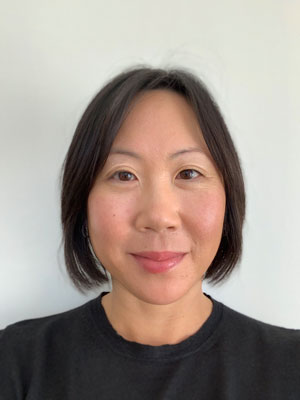Hirsutism, a common clinical problem, can undermine a women’s confidence and self-esteem. However, its significance extends beyond cosmetic inconvenience as it may indicate the presence of an endocrine disorder. Most androgen excess is idiopathic or polycystic ovary syndrome (PCOS) related.
 Clinical features of female androgen excess include acne, hirsutism, menstrual irregularity and infertility. Severe hyperandrogenaemia leads to virilisation, characterised by deepening of the voice, clitoromegaly and fronto-temporal balding. Clinical details including symptom severity and rate of progression, ethnicity and family history will determine the most likely aetiology and guide investigations. The challenge is to catch the serious yet treatable causes in the sea of functional hyperandrogenism.
Clinical features of female androgen excess include acne, hirsutism, menstrual irregularity and infertility. Severe hyperandrogenaemia leads to virilisation, characterised by deepening of the voice, clitoromegaly and fronto-temporal balding. Clinical details including symptom severity and rate of progression, ethnicity and family history will determine the most likely aetiology and guide investigations. The challenge is to catch the serious yet treatable causes in the sea of functional hyperandrogenism.
PCOS accounts for the vast majority (70-80%) and is diagnosed if two of three features are present after eliminating other causes: menstrual irregularity, clinical and/or biochemical hyperandrogenism and polycystic ovaries on ultrasound. As metabolic dysfunction is common, a cardiometabolic assessment is important once PCOS is diagnosed. Symptoms typically begin peri-pubertally and virilisation is uncommon. Most importantly, PCOS is diagnosed by exclusion.
Non-classic Congenital Adrenal Hyperplasia is clinically indistinguishable from PCOS and is present in 4.2% of hyperandrogenic women. The prevalence is higher among Ashkenazi Jewish, Mediterranean and Middle Eastern people. A high LH/FSH ratio, polycystic ovaries and insulin resistance may all be present. Therefore, routine biochemical screening with an early morning, follicular phase 17 OHP is crucial, particularly for those desiring fertility. Consider specialist referral for confirmatory testing if 17 OHP is elevated, or if normal but clinical suspicion persists due to high risk ethnicity or family history. Molecular diagnosis and testing of the reproductive partner will facilitate counselling regarding risk of life-threatening Classical CAH in off-spring. Glucocorticoids are effective for anovulatory infertility and may reduce miscarriage risk.
Endocrinopathies such as Cushing’s syndrome and acromegaly can masquerade as PCOS. However, specific clinical features are usually present to flag the need for screening. In women with menstrual disturbance, exclude hyperprolactinaemia, thyroid dysfunction and pregnancy.
Rapidly progressive virilising symptoms or a serum total testosterone over 5 nmol/L raise suspicion of an androgen-secreting tumour. Although rare in premenopausal women, 50% are malignant and 80% are ovarian. Transvaginal ultrasonography is the imaging test of choice, but MRI may be more sensitive. If DHEAS is markedly raised, an adrenal CT is indicated to exclude adrenocortical carcinoma.
Ovarian hyperthecosis is more common after menopause but can occur in pre-menopausal women. Severe insulin resistance and hyperandrogenaemia are characteristic and virilisation may occur. The ovaries are enlarged, with a solid rather than cystic appearance.
Don’t forget to consider transfer of topical testosterone from the partner or use of anabolic steroids, testosterone or valproic acid.
Key messages
- PCOS is a diagnosis of exclusion.
- Exclude thyroid dysfunction, hyperprolactinaemia and pregnancy if menstrual disturbance is present.
- Rapid symptom progression or total testosterone over 5 nmol/L raise suspicion for a virilising tumour
Female Androgen Excess: Biochemical Investigations:
| Serum Total Testosterone by a reliable assay | First line for investigating symptoms of female androgen excess
Ideally, a follicular phase sample in menstruating women (Day 2-5). Cease oral contraceptive pill for 3 months prior as it suppresses androgen production |
| SHBG, Free Androgen index, calculated free testosterone or calculated bioavailable testosterone | These indices are recommended in addition to total testosterone for diagnosing
biochemical hyperandrogenaemia in PCOS. |
| Reproductive hormone profile:
LH, FSH, oestradiol, progesterone |
Facilitates interpretation of androgens in the context of menstrual cycle phase. Androgens
rise at mid cycle and are slightly higher in the luteal compared with the follicular phase. |
| 17 OHP | Request an 8am, follicular phase sample in women with menstrual cycles
or on any day if amenorrhoeic. Consider specialist referral for confirmatory testing if basal 17 OHP is elevated or if normal, but clinical suspicion persists due to high risk ethnicity or family history. Basal 17 OHP is normal in 10% of non-classic CAH. Peak 17 OHP > 30 nmol/L by immunoassay is diagnostic following adrenal stimulation |
| Androstenedione | Often elevated in Non-classic CAH, may be elevated in PCOS |
| DHEAS | Assess if virilising tumour is suspected
Significant elevationà exclude adrenocortical carcinoma |
| TSH, prolactin, pregnancy test | Particularly if menstrual disturbance present |
| Screen for Cushing’s syndrome
(1mg dexamethasone suppression test, late-night salivary cortisol, 24 hr urine free corticoids) or Acromegaly (IGF-1) |
If suggestive clinical features are present:
Cushing’s- rapid central weight gain, striae, dorso-cervical adiposity, proximal weakness Acromegaly- enlarged hands and feet, coarsened facial features, headaches, excessive sweating, thickened, oily skin, skin tags, osteoarthritis |
| Cardiometabolic risk assessment | If PCOS is diagnosed |
| Serum AMH | Often elevated in PCOS but not currently recommended for diagnosis and
not Medicare rebatable |
References available on request.
Questions? Contact the editor.
Author competing interests: nil relevant disclosures.
Disclaimer: Please note, this website is not a substitute for independent professional advice. Nothing contained in this website is intended to be used as medical advice and it is not intended to be used to diagnose, treat, cure or prevent any disease, nor should it be used for therapeutic purposes or as a substitute for your own health professional’s advice. Opinions expressed at this website do not necessarily reflect those of Medical Forum magazine. Medical Forum makes no warranties about any of the content of this website, nor any representations or undertakings about any content of any other website referred to, or accessible, through this website.

